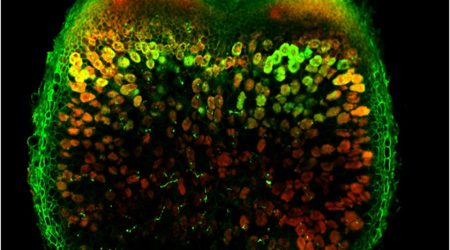
Signalling mechanism enhancing root nodule symbiosis (CHARPENTIER_J25DTPR)
Nitrogen (N) acquisition is fundamental for plant growth. However, N is poorly available in soils, leading to extensive and costly chemical fertiliser applications. It is estimated that 50-70% of nitrogen-derived fertilizer provided to the soil is lost, giving rise to soil and water pollution as well as global warming through emissions of nitrous oxide.
